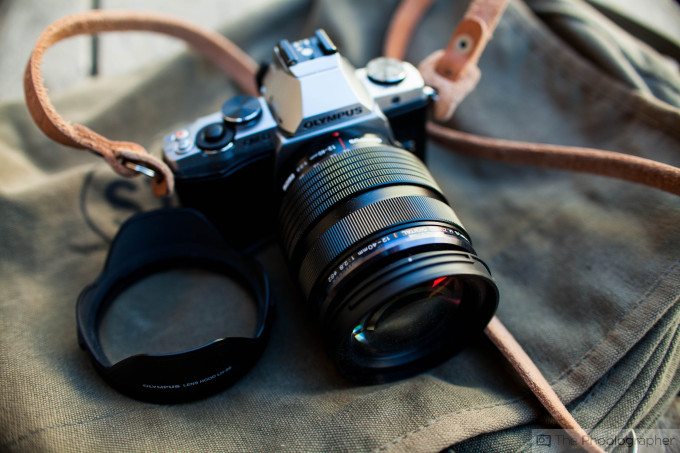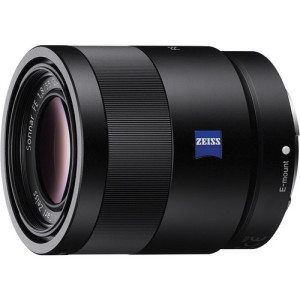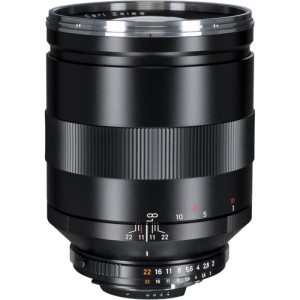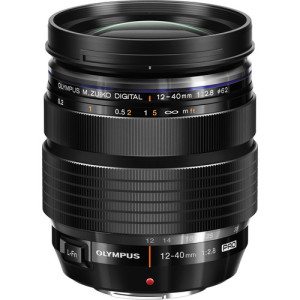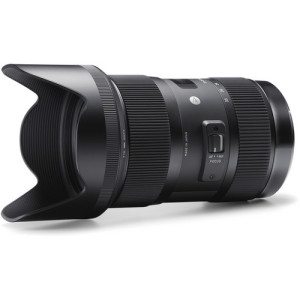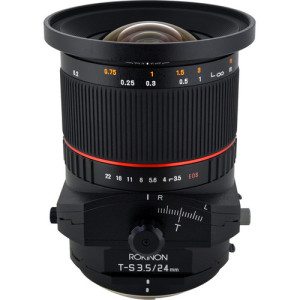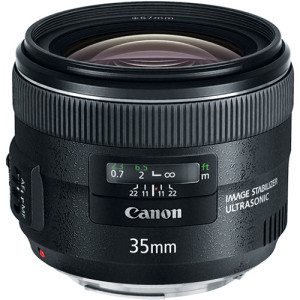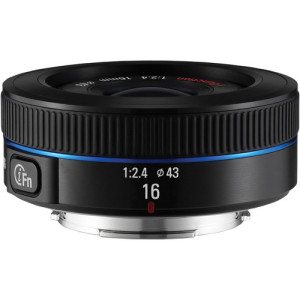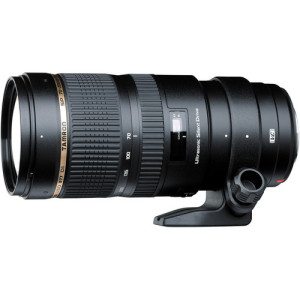There are some lenses that are just better than others. And this year, we reviewed a slew of lenses. Only a couple are worthy of being called our favorites though.
Sony 55mm f1.8
When Sony announced their full frame E mount system this year, they released a handful of lenses to work with it. The fastest amongst them is the 55mm f1.8. This lens was co-designed with Zeiss–hence the Sony Zeiss branding on it. Additionally, the lens has many things about it that seem very Zeiss-like in nature. For example, the exterior feel is something that elicits many of Zeiss’s design cues.
If used on an APS-C sensor camera, this lens will render an 80mm field of view. But when used on an A7 or A7r, you’ll manage to get the full imaging circle. As far as image quality goes, you’ll get the best results with the A7r though you’ll get significantly better autofocusing performance from the A7. On top of that though, the overall quality of the images will be beautiful with the lens delivering very sharp results when being shot wide open.
For many folks looking into the system, we highly suggest that this be the first lens that they get. It’s also currently our favorite amongst the lineup.
However, we need to warn you–it’s quite expensive. In fact, we think that it’s overpriced. But you’ll be happy with the results for sure.
Read the review.
Zeiss 135mm f2
If you’re looking for the perfect portrait lens, then you’ll need to look no further than Zeiss’s 135mm f2 lens. Super sharp wide open, Zeiss’s signature micro-contrast, and some of the smoothest and most beautiful bokeh that we’ve ever seen are only some of the reasons why we’re totally smitten with the 135mm f2. The lens has some spectacular build quality to it though when you’re focusing a lens like this, you’ll need to ensure that you stay absolutely still because turning the focusing ring can throw off the focusing even just a bit.
So who needs this lens? Honestly, no one needs it except for the most discerning of portrait/headshot photographers. The compression that will make your subjects look flattering is completely invaluable–especially if a client is nitpicking at every single image you take. In our experience, we found it nearly impossible to take a horrible image with this lens.
With all this said though, realize that you’re surely paying for quality. It’s an expensive lens–in fact it’s currently the most expensive 135mm lens on the market for DSLRs. But you won’t be sorry.
Read the review.
Olympus 12-40mm f2.8
Most of us here at the Phoblographer aren’t the biggest fans of zoom lenses. But when we find one that is perfect, we’re really blown away. You see, so much more is bound to go wrong with the design of a zoom lens. For example, the focusing alignment could be off, the aperture ranges might not be what they’re advertised to be, and so much more. But when one is really well made, it deserves the highest praises. Olympus did this with the 12-40mm f2.8 lens.
This lens is sharp wide open; and we see no reason to stop it down below f4 at all unless you’re working with studio lights. In fact, this is the sharpest zoom lens that we’ve tested in a while. On a Micro Four Thirds camera this lens will render a 24-80mm field of view with a full frame depth of field equivalent of f5.6 when shooting wide open.
Then you add in all of the other awesome things about this lens: it’s weather sealed, fast to focus, and offers such a versatile zoom range that you may never want it to leave your camera.
Like many other lenses on this list though, it’s pricey.
Read the review.
Sigma 18-35mm f1.8
There are so many photographers in the industry that sit there and say, “Sigma? Really?” Little do they know of the major improvements that the company has made in recent times to become one of our favorite lens manufacturers in the market. Indeed, they’re doing such a great job that they should be making first party manufacturers quake in fear.
And for the photographers that just don’t even know–we say let them. That way there’s more lenses for us 😉
With that said, Sigma’s 18-35mm f1.8 is the fastest aperture zoom lens on the market right now for APS-C DSLRs. Not only do you get a fast f1.8 aperture but you get the sharp, contrasty and bokehlicious performance that you can always expect from the company. It’s like having a set of fast prime lenses in one package–and that will make any APS-C DSLR shooter quite happy.
The price tag on the lens isn’t too bad either–but we think that pros and semi-professionals are the ones that will make the most use of the lens. It would be a great injustice for the internet if all you did was take photos of puppies and kitties and food with this lens.
That is unless you’re doing it professionally.
Read the review.
Rokinon 24mm f3.5 Tilt-Shift
Tilt-shift lenses are often seen as very expensive pieces–which is why many folks typically embrace the filters that one can get instead. But Rokinon has always delivered a more premium image quality at an affordable price point–and their 24mm f3.5 tilt shift is no exception. From f5.6 and onward, the image quality is very solid.
Some of our problems with the lens have to do with the build quality: specifically in regards to the plastics and the small knobs. But for the price point again, we really can’t complain.
Like some other lenses on this list, we don’t think that this lens is for everyone. You’ll need to set it down on a tripod and carefully compose a scene to get the absolute best performance from the lens. It’s designed for landscape and architectural photography.
With this said though, it might be an interesting project to see what you can get with this lens if you decide to shoot a timelapse with it. Again though, realize that you’ll need to take the time to learn the ins and outs of this lens before you realize its full potential.
Read the review.
Canon 35mm f2 IS USM
Canon has desperately needed a new 35mm lens for a very long time. Their 35mm f1.4 L is a lens that was released during the film days and hasn’t received a refresh yet. However, their new f2 lens, without the L branding is a new lens very worthy of being on your camera.
So why the addition of IS with such a wide focal length? For starters, video shooting. Next, consider shooting in very low light without a flash–the addition of IS will greatly help with capturing moments.
We used it at a wedding and really loved the results that we got with it. To boot, so did our clients.
In informal tests, we found this lens to be sharper than the L variant, but not sharper than Sigma’s 35mm f1.4–which we still feel is the king of the crop amongst 35mm lenses out there.
Still though, Canon has shown that they’re trying to work on something and acknowledge that they needed an update. If you can justify the price, this is a very fine lens.
Read the review.
Samsung 16mm f2.4
If you’re a Samsung NX system user, this is the most essential lens that you’ll need in your kit. The 16mm f2.4 is essentially a pancake lens and makes your package that much more portable.
But portability isn’t everything when it comes to a lens–its sharp, has nice bokeh, and is one of the faster to focus lenses that we’ve tested. What we really liked about it though is that when you combine the lens with a camera and use it along with Samsung’s philosophy of shooting and sharing on the spot, it becomes a lens that you’ll quickly fall in love with.
When you combine the experience with quickly working with VSCO Cam or Instagram, you’ll realize that this lens is very much a perfect companion to your daily shooting.
Samsung has an interesting feature that no one else really has: and that’s their iFunction button. Using this button, you can use the dials on the camera and control more than one exposure parameter or other settings depending on what mode you’re in. If you’re a seasoned photographer, you’ll need to rewire your brain a tad to get used to it. But once you do, you’ll realize how convenient it is.
Read the review.
Tamron 70-200mm f/2.8 SP Di VC USD
Rounding up the tail end of this list is Tamron’s 70-200mm f2.8 SP Di VC USD.
And in our opinion, it’s one of the best pro-targeted lenses on the market–but getting folks to drop their Canon or Nikon glass might be tough.
This lens is sharp, has some of the best vibration compensation that we’ve seen, exhibits great color, and is fast to focus. In fact, this lens renders the best colors that we’ve seen of any pro zoom out there. Plus there is weather sealing built in–which is another added plus. It’s a beautiful lens overall.
We used the lens for headshots, candid street shooting (yes we took this behemoth out for it) and loads of other things. Indeed, all that many folks will need is this and a 24-70mm f2.8 zoom.
Read the review.
Please Support The Phoblographer
We love to bring you guys the latest and greatest news and gear related stuff. However, we can’t keep doing that unless we have your continued support. If you would like to purchase any of the items mentioned, please do so by clicking our links first and then purchasing the items as we then get a small portion of the sale to help run the website.
Also, please follow us on Facebook, Google+, Flickr and Twitter.


